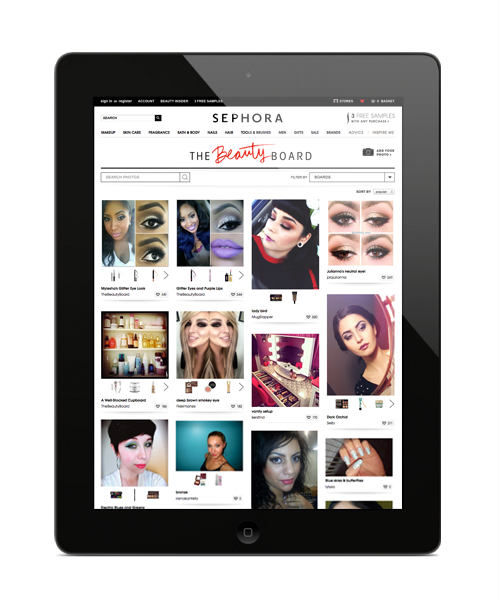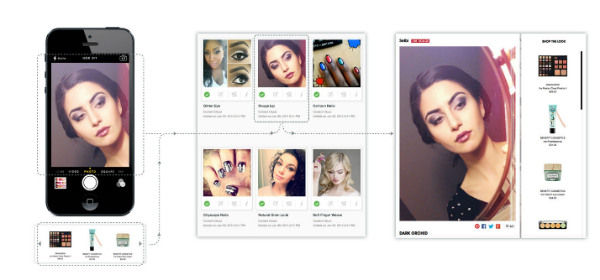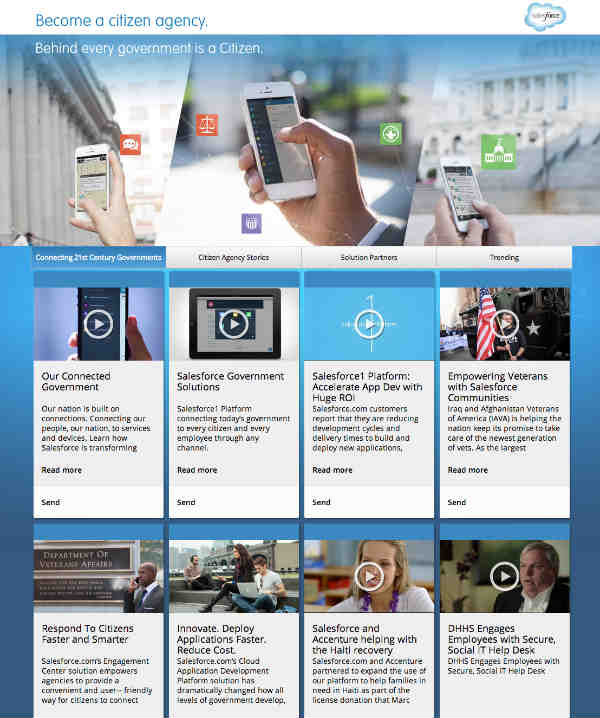Use These 3 ‘Cs’ for More Popular, Engaging Content
- Fahad H

- Sep 16, 2014
- 6 min read
If you’re reading this post, it’s safe to assume you are one of the
92 percent of marketers using some form of content marketing. However, simply signing up to play in the game of content marketing and becoming an all-star are entirely different matters. As a marketer, the best way to learn how to create engaging content is to study the pros.
Two brands currently nailing their content marketing strategies are Salesforce and Sephora. Despite having little in common on the surface, both companies manage to regularly produce popular, engaging content because they share an awareness of three elements — let’s call them the three Cs — that make content marketing efforts successful:
Curated content: The ability to leverage “other people’s content” and/or user-generated content (UGC), in addition to their own phenomenal in-house content.
Context: They know how to wrap content into a storyline that is relevant for any stage in the sales cycle and integrate it with other solutions to return valuable information to the consumer.
Conversion: They build their programs around specific business needs and goals, and are keenly aware of their key performance indicators (KPIs) when creating any piece of content.
Goal-focused content marketing
To start, let’s look at the goals both Salesforce and Sephora have for their content marketing programs.
Salesforce uses content to provide effective sales enablement: The company empowers its salespeople in the field by creating outstanding content from its live events, as well as through post-show follow-ups. The marketing team also curates rich, multimedia earned and owned content, which gets fed to its salespeople to help inform their efforts. Theirs is content marketing turned into effective sales enablement.
Sephora uses content marketing to drive product sales on its website: By curating user-generated content (UGC) “selfies” from its member community and tagging those selfies with product SKU and customer data, Sephora leverages the power of social media content to make its e-commerce cash register ring.
The three “Cs” in action
Now that we understand their content goals, let’s take a closer look at how these two companies follow the three Cs.
1. Curated content: It seems obvious, but the importance of creating and curating really good content is often overlooked. However you decide to build your content assets, it’s important that you aren’t just pushing them out there because your competitors are. After all, there’s a lot of “CRAP” out there, and that does more harm than good for your brand and your customer relationships.
So, what does exceptional content look like?
It’s visual. It’s unique. It’s consistent with your brand identity. But most of all, good content is engaging enough that it will move the needle on your business goals.
Here are two examples:
Salesforce: For its DC Salesforce1 event, the SFDC marketing team leveraged its existing content, which included past YouTube videos of speeches given by its popular CEO, Mark Benioff, and marketing collateral like infographics and articles that captured the imagination of prospects who visited the company’s booth.
These content “playlists” were presented to prospects in a variety of manners, across multiple screens, including large LCD touch screens for 1:1 customer interaction, mobile phones where the playlists were texted to prospects, and on tablets and PCs, as needed. The playlists created were designed to be responsive across all platforms used, resulting in a flexible omni-channel content marketing experience.
In addition, the SFDC team had access to a “trending” playlist that pulled-in curated up-to-date content from the event itself being uploaded by Salesforce and attendees on Twitter, Instagram and YouTube. Salesforce is rolling this strategy out to its other shows this year – including Dreamforce.

Sephora: In Sephora’s case, the company recently launched a Beauty Board, which leverages the power of its 10+ million strong loyalty club to provide the UCB that drives its content and merchandising strategy. Sephora members take selfies (photos) after they have applied makeup. The members then tag the photo with specific product information. The photos them immediately and automatically upload to the Beauty Board. This is a prime example of curated content supporting an ongoing omni-channel retail merchandising strategy. It’s a great example of real people creating a real-time content experience.

Sephora syncs its product catalog to user-generated content, for a seamless selfie-led shopping experience.
2. Context: Sephora’s Beauty Board is also a perfect example of adding context to content by plugging into other solutions that provide customers with purchasing insight as they move down the funnel from interest in and awareness of Sephora’s products to the desire to try those products for themselves.
For example, to ensure members don’t tag a random product that Sephora doesn’t carry or isn’t in stock, Sephora syncs its Beauty Board with its e-commerce inventory management system. This makes it easier for users to ensure they are sharing the right product information in their content — which in turn makes it easy for potential customers to be confident that they are buying the exact products used to create the looks they’ve seen on the Beauty Board.
It’s this syncing that allows Sephora to empower its members to “do the work for them” while driving purchase behavior directly from the user-generated content it publishes. Adding an extra point of convenience in the content creation process, Sephora doesn’t need to clear UCG rights or moderate tagged content created through this effort, as everything is covered the in terms-of-service agreement members must agree to.
The point here is that if content marketing it is going to really keep growing and scaling, you have to start providing more than just content. The Sephora example is just one way to accomplish this. Other integrations with e-commerce platforms, marketing automation systems, and CRM tools can help do the same thing.
3. Conversion: A friend of mine has a saying: “Creativity without conversion equals zero.” What’s the point in pooling resources and spending money for content development and distribution if you don’t have defined and quantifiable success metrics? Too often, top-of-funnel content marketing is let off the hook by not being held to the same performance standards as its demand generation cousins are at the middle of the funnel.
This can be easily solved by setting specific top-of-funnel metrics.
For companies that really want to dig into how their content marketing programs are impacting conversions and sales, try implementing full-funnel attribution analysis. It will show you the influence and impact your content marketing programs are having on any downstream conversions.
For example, you might find that 50 percent of your sales are being driven by a Google Adwords campaign. But it turns out that 30 percent of those Google Adwords leads were first introduced to your company by your content marketing program. Attribution analysis will apply the proper credit — down to percentage of sale — your content marketing programs are delivering.
Attribution analysis has eluded many marketers due to technology limitations and improper data models. But, it’s a valuable model to have in place for your content marketing program. Think of each piece of content as a unique “motivator” or “influencer” in the path a prospect takes from top-of-funnel all the way on down to buying a product. Just like you would track how well a Google Adword, a banner ad, or a Marketo email contributes to a conversion event, you should employ the same level of tracking rigor to measuring the performance of your content marketing efforts.
Today, technology exists to enable marketers to track this sort of activity. For instance, at industry events, Salesforce reps actively talk to prospects at their booth, as well as passively watch prospects interacting with large LCD touch screens filled with content cards. When a prospect shows interest in a piece of content, the rep can open the content card and leverage its native sharing features by entering the email address and mobile phone number of that prospect. The content will then get texted to the prospect, who can interact with the multimedia content at his or her convenience. Because the process is fully integrated with its technology platform, Salesforce is able to track the prospect’s engagement with that content by seeing if it was opened post-show, if it was shared, or if any other form of action was taken.

As the content marketing industry continues to rapidly evolve, it’s important to base your program in sound, data-driven methods and follow the three Cs. Doing so will help you turn content marketing into a powerful engine for future growth.
For more great ideas, insights, and examples of engaging content marketing, read Epic Content Marketing, by Joe Pulizzi.
Cover image by relaxhotels via pixabay.com








Comments